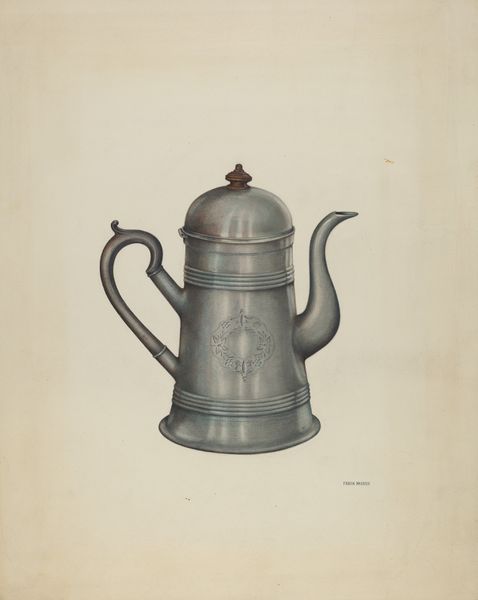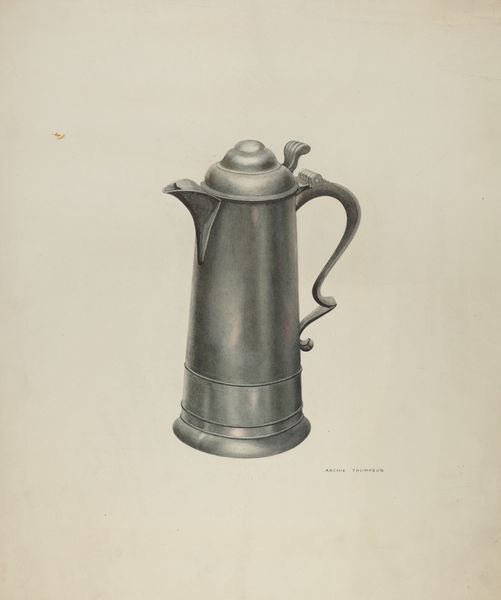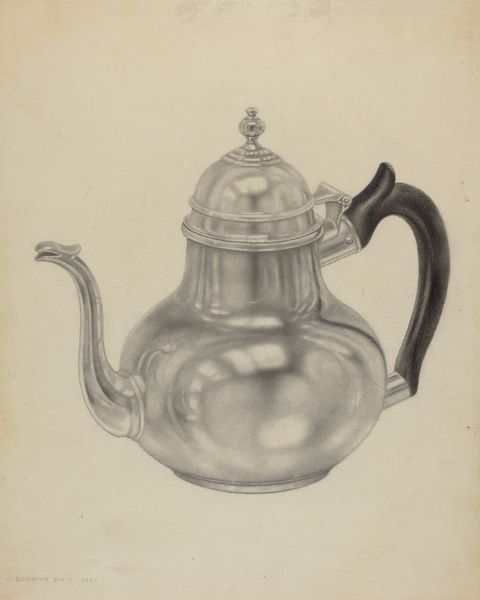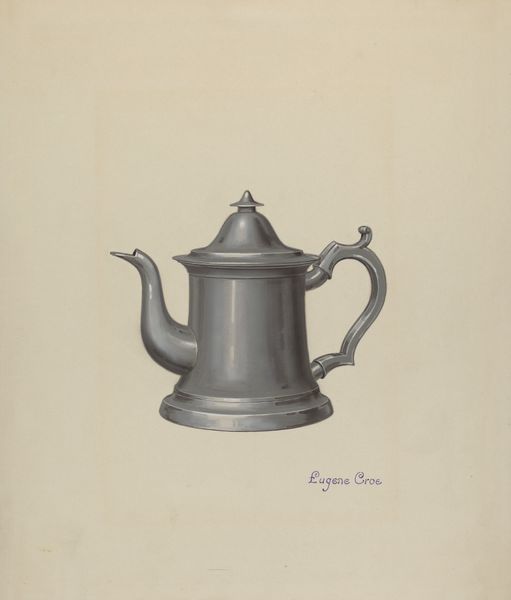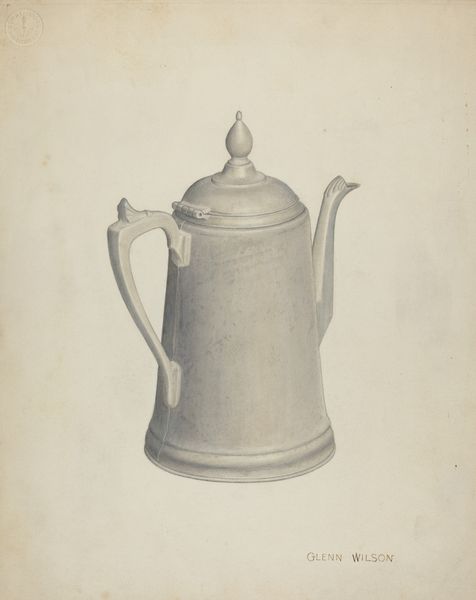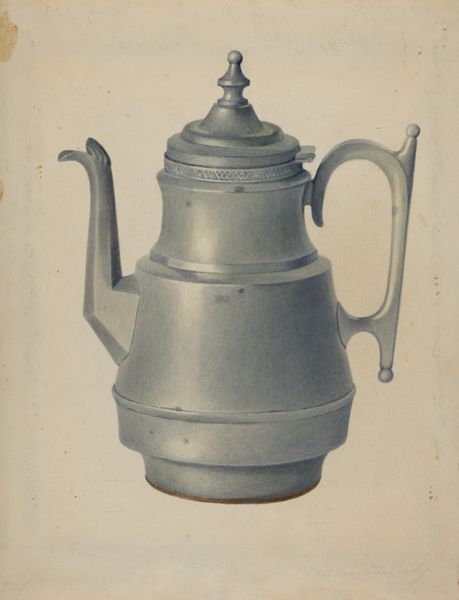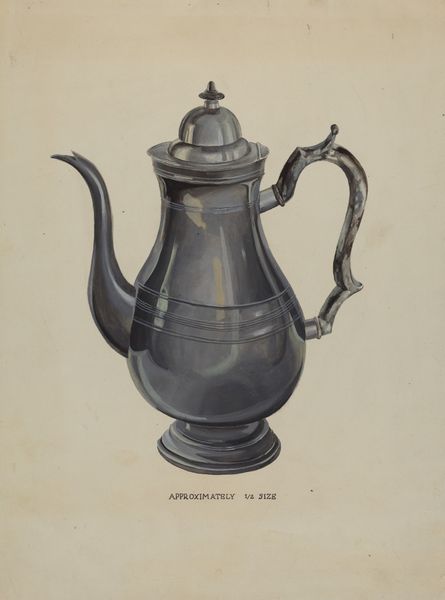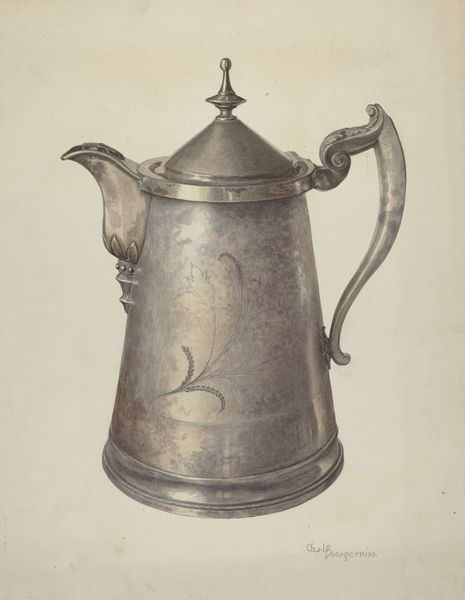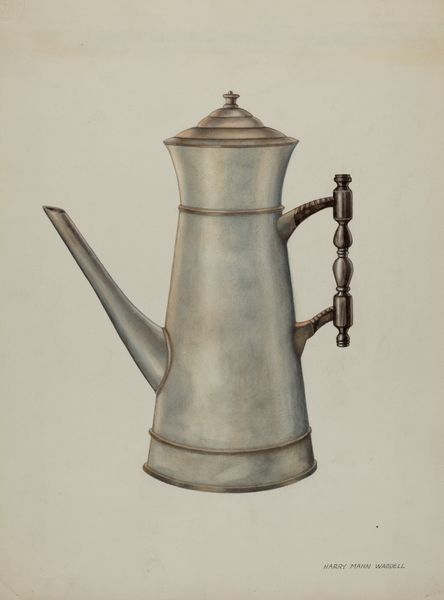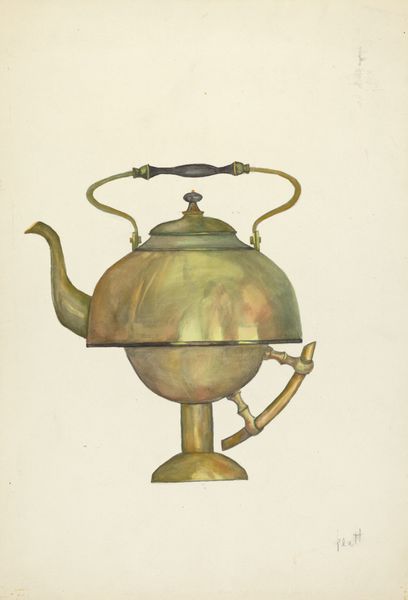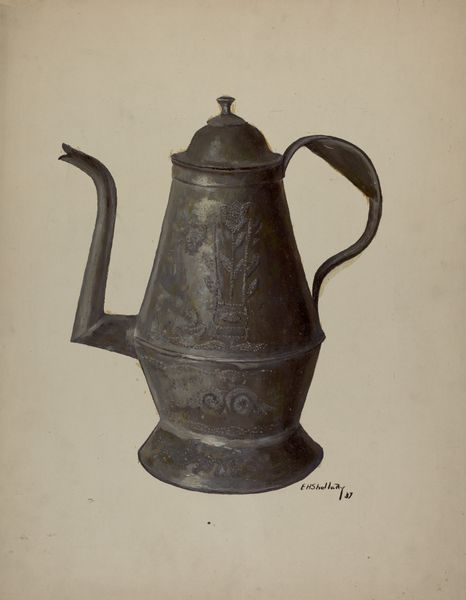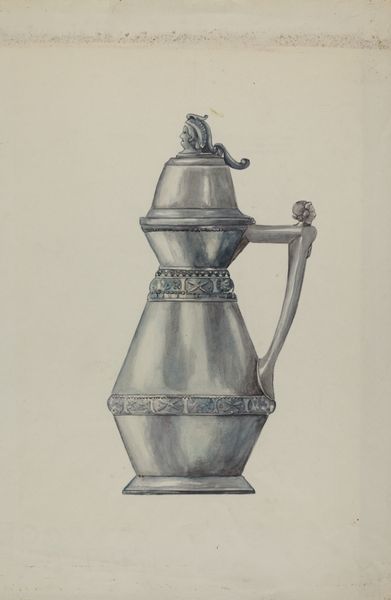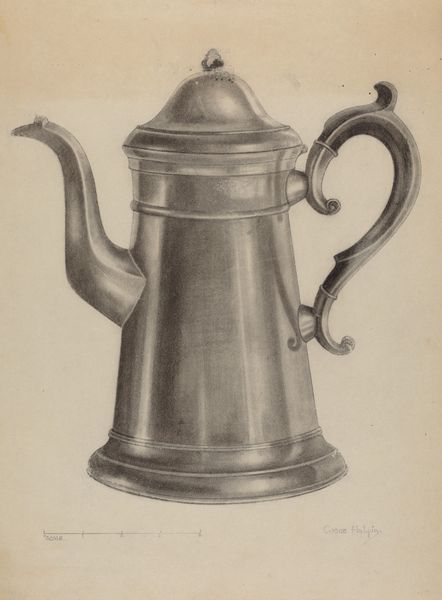
drawing, watercolor, pencil
#
drawing
#
pencil sketch
#
form
#
watercolor
#
pencil drawing
#
pencil
#
line
#
watercolour illustration
#
realism
Dimensions: overall: 56 x 40.9 cm (22 1/16 x 16 1/8 in.) Original IAD Object: 12" high; 10" wide
Copyright: National Gallery of Art: CC0 1.0
Editor: This is "Coffee Pot," made between 1935 and 1942 by John Thorsen, using pencil and watercolor. What strikes me is how unfinished it seems, especially the bottom half of the pot. What do you make of it? Curator: It's fascinating, isn't it? At first glance, it seems like a simple still life. But consider the context. This piece was created during the Great Depression. What objects were typically being valorized and whose lives? How might depicting a relatively mundane object like a coffee pot - but rendering it with such detail in parts - speak to anxieties or aspirations of the time? Editor: That's a great point! It makes me wonder if this piece has anything to do with how objects were being produced and consumed back then. Curator: Exactly. Notice how the artist emphasizes certain sections of the pot, seemingly capturing a sense of elegance in a domestic setting. Yet, by leaving the lower portion incomplete, there might be some statement about aspiration versus reality, particularly among the working classes during a period of economic hardship. Also, watercolor and pencil allowed artists to quickly create multiples and reproductions, speaking to changes in distribution and viewership during this period. Editor: So, the act of depicting and reproducing such an everyday object gains new meaning in light of the social climate? Curator: Precisely. The very existence and incompleteness of the work challenges preconceived notions of access, wealth, and artistry. Were people able to obtain luxury goods, or was that kept solely for the upper class at that time? Who had access to beauty, and was it only in a specific class of objects? What sort of commentary might Thorsen have been trying to provide with this piece? Editor: I see, thanks! I didn't expect that looking at an everyday object could teach me so much about American history. Curator: Indeed. Art often holds up a mirror to society. Exploring its historical context gives it the ability to start bigger conversations and show how social structure influences our lives.
Comments
No comments
Be the first to comment and join the conversation on the ultimate creative platform.
